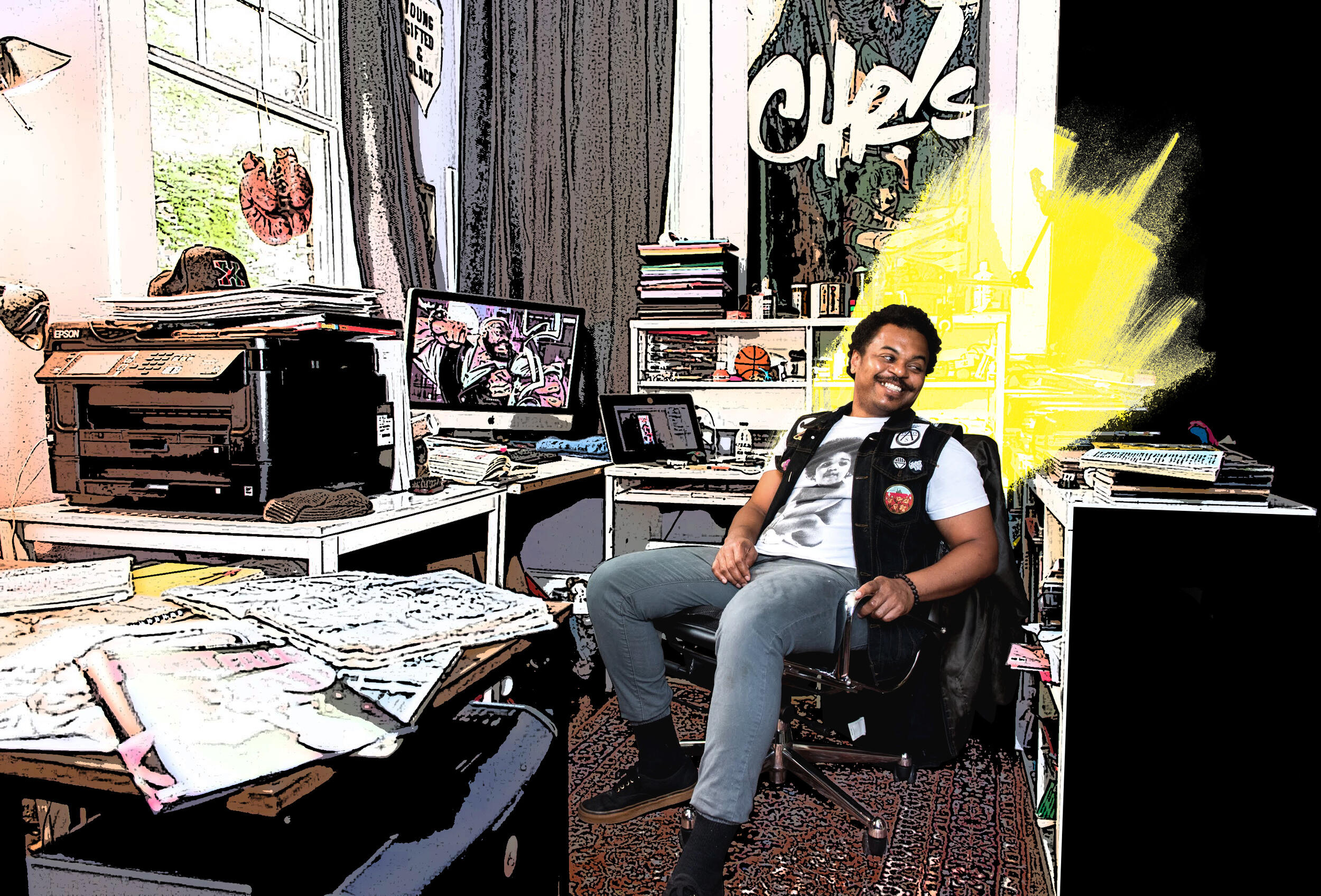
Dec. 16, 2019
‘I want it to feel vibrant and lifelike’: Arts alum shares his approach to visual storytelling
Share this story
Richmond-based artist Chris Visions, who works in graphic design, game design, storyboarding, illustration and comics, said he has always had a fascination with movies, cinema and storytelling.
“[Comics] seemed like the most successful way to make my own movie, basically, on paper,” said Visions, a Virginia Commonwealth University School of the Arts alumnus. “With a story, I can specify the themes that I’m going to hit on and tell them in an artful way that gets people thinking.”
In June, the first issue of “Trust Fall,” written by Christopher Sebela and illustrated by Visions, was released.
Here, Visions talks about the comics industry, how he got his start, and what it’s like to create a character.
How would you describe your aesthetic?
A lot of people have described it as kinetic and energetic. I want it to feel vibrant and lifelike. When someone sees my art, I want them to feel something or to wrestle with something.
I don’t want eye candy. Even with how expressive my work is, I’m still telling stories. It helps you settle into those more subtle moments, instead of everything being in your face.
How did you get your start?
I went up to New York Comic Con a couple of times and put a portfolio in and didn’t hear anything. One time I sold my car to pay for the bus ticket to go. I talked to Neal Adams [known for his imagery of Batman and Green Arrow] and got him to critique my work; he totally trashed it the first couple of times. I talked to an editor who gave me an art test for “American Vampire.” He said it was very ambitious, and that was it. It was like that, over and over again.
Then, one time I went to the convention and didn’t bring a portfolio. I talked with a guy who was a fan. He said to send him some stuff and, long story short, my first real professional gig was doing a cover for “Adventure Time.” It propelled me and got me into my first book, “Dead Letters,” [written by Sebela].
What’s it like to work with a collaborator?
When [Sebela] and I first started working on “Dead Letters,” we had a Tumblr where we would share our interests and things to pull from them. You start developing a language with that person and get in their head. For “Trust Fall,” Chris knows me pretty well and leaves the door open for me to put myself in there. It’s a healthy balance and probably one of the best experiences I’ve had.
How do you create a character?
Usually, I go through a lot of clearing cobwebs where I do basic sketches that I know I won’t use, but it’s getting it out of my system. Then I start whittling away things that are overdone and tropes and putting things in that speak to me.
One of the most important things I was taught was to create from my own experiences. I try to put as much of myself in there, where it’s appropriate. I also try to empathize with, and not judge, the character. Wherever he goes, that’s his expression of who he is.
What’s challenging about working in comics?
A lot of people romanticize art, and they’re like, create from passion and don’t worry about money, but that’s not the world we live in. People need more practical advice on how to do things, especially when they come from different economic backgrounds. And the industry is more accessible for some people than others.
Everybody’s got their own path they have to take, but [we should] at least be honest about it. Say, “Yeah, comics doesn’t pay great and a lot of it is about passion, but it’s also setting up a plan of what you want to do and looking ahead, rather than what’s right in front of your feet.”
Subscribe to VCU News
Subscribe to VCU News at newsletter.vcu.edu and receive a selection of stories, videos, photos, news clips and event listings in your inbox.




